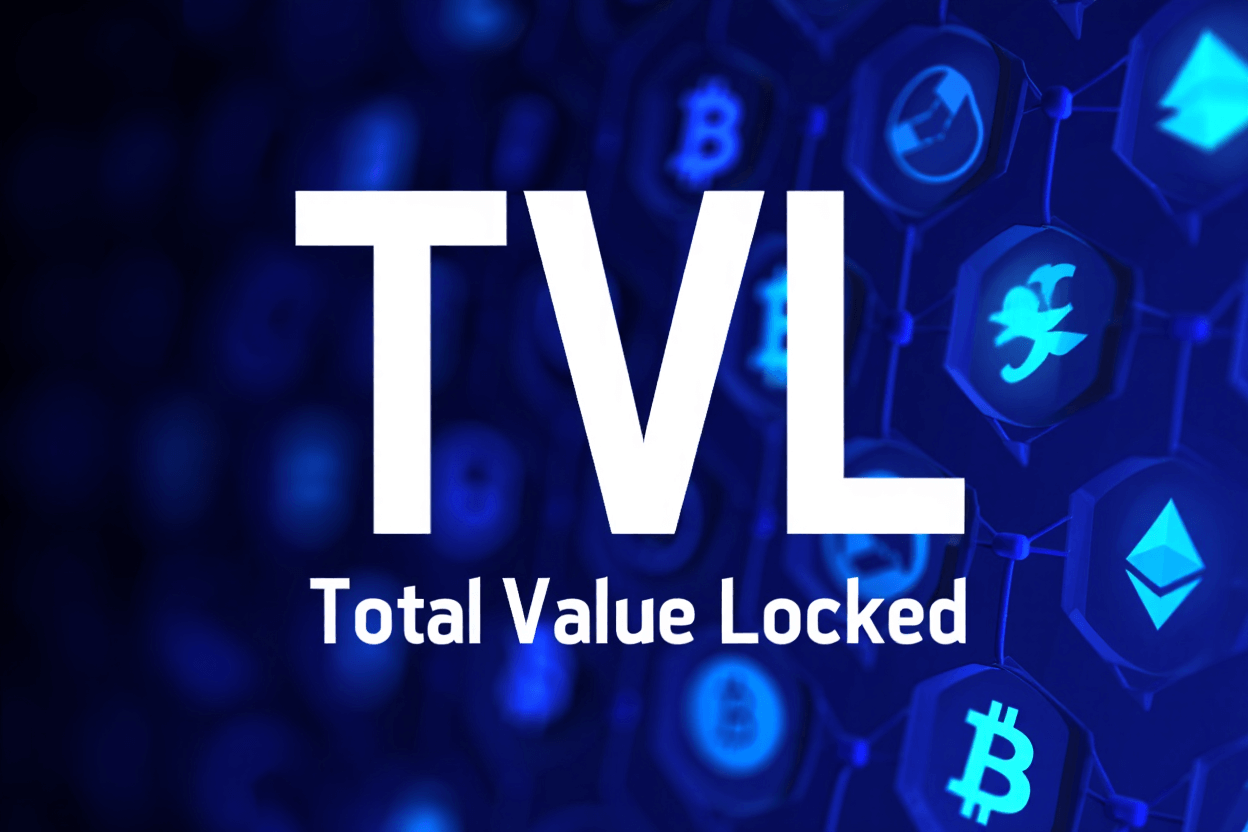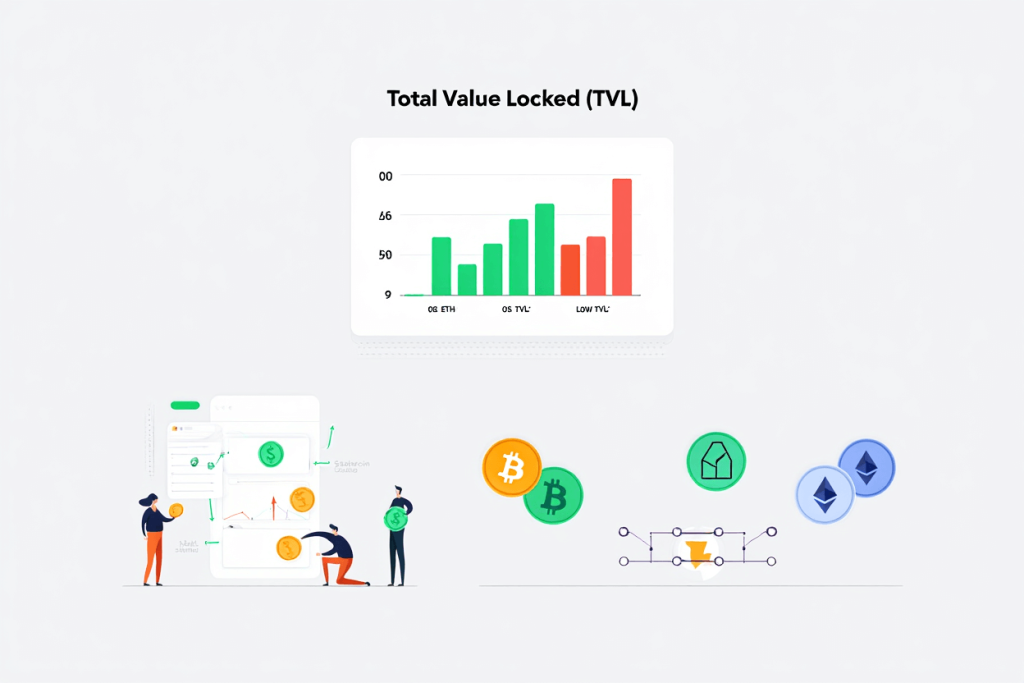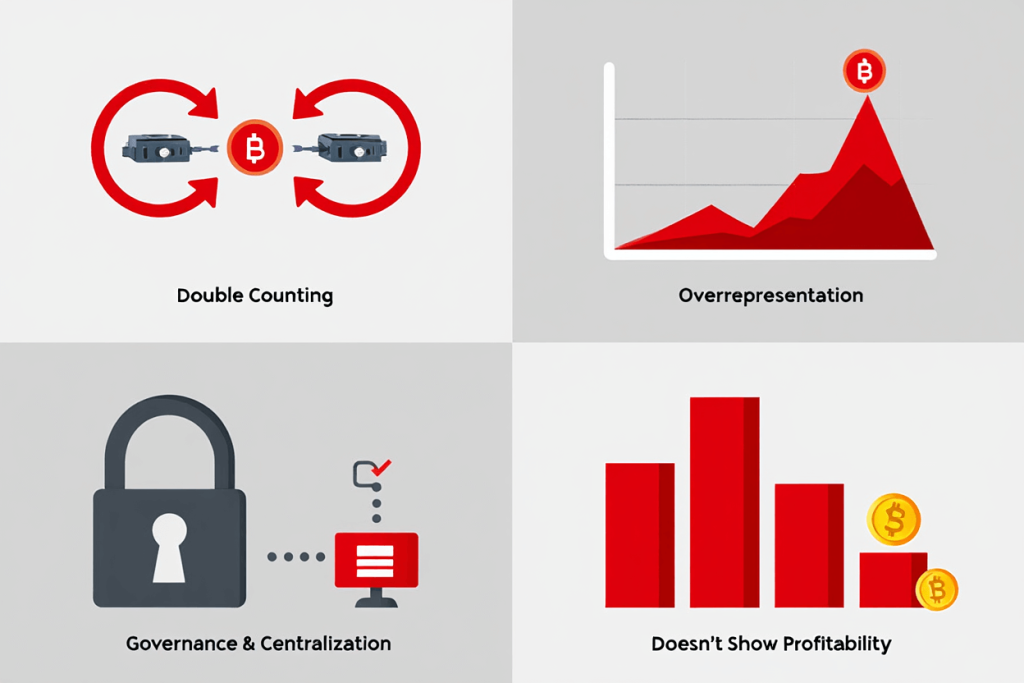Physical Address
304 North Cardinal St.
Dorchester Center, MA 02124
Physical Address
304 North Cardinal St.
Dorchester Center, MA 02124

TVL meaning in crypto refers to the total value locked in decentralized finance (DeFi) protocols. Total Value Locked (TVL) has become a foundational metric in decentralized finance (DeFi), offering investors deep insight into platform strength, network health, and market trust. Essentially, TVL represents the sum of all assets committed to DeFi protocols, encompassing everything from lending platforms to decentralized exchanges. Its significance has grown alongside the explosive adoption of DeFi, where billions of dollars now flow through smart contracts and liquidity pools daily.
For newcomers, TVL provides a crucial snapshot of which projects are attracting real, on-chain value. For experienced investors, tracking TVL shifts can reveal trending protocols, growth opportunities, and potential risks. Understanding the basics of TVL is vital regardless of your experience level—you’ll encounter it everywhere from analytics dashboards to project whitepapers. In January 2024, for example, EigenLayer broke past a $10 billion TVL milestone (DeFiLlama), placing it among the world’s top DeFi protocols. As Alex Svanevik, CEO of Nansen, states, “TVL has become a shorthand for measuring DeFi’s collective economic gravity.”
This guide covers everything you need: what TVL is (and isn’t), why it matters, how it’s calculated, practical strategies for using TVL when analyzing crypto projects, and limitations you should know before making investment decisions.
TVL, or Total Value Locked, is the total US dollar value of all assets held inside a decentralized finance (DeFi) protocol at a specific point in time. These assets are “locked” because users have deposited or staked them into smart contracts, typically in exchange for yield, governance rights, or liquidity provision.

Example: If Aave has $12B worth of assets supplied by users in its smart contracts on June 1st, 2025, its TVL is $12B. According to DeFiLlama in mid-2024, top platforms like Lido and Uniswap regularly hold TVLs above $15B each.
To explore similar concepts, check our crypto knowledge section for beginner-friendly explanations.
TVL quantifies the US dollar amount of all crypto assets locked in a protocol, using real-time valuations. Here’s how the calculation works:
| Token | Amount Locked | Current Price | Value |
|---|---|---|---|
| ETH | 10,000 | $2,000 | $20,000,000 |
| USDC | 5,000,000 | $1 | $5,000,000 |
TVL = $20,000,000 (ETH) + $5,000,000 (USDC) = $25,000,000
Related reads in the crypto category:
TVL gives fast visibility into a platform’s popularity and economic weight. Here’s why savvy investors monitor it closely:
Investors also watch TVL trends to benchmark ecosystem health, anticipate yield opportunities, or spot early innovation. When DeFi platforms like Blast or Mantle cross significant TVL thresholds, it often coincides with increased media coverage and investor interest.
TVL is just one part of DeFi analytics. Here’s a quick comparison:
| Metric | What It Measures |
|---|---|
| TVL | Total assets locked in a protocol (real value at stake) |
| Market Cap | Total value of all tokens in circulation (token price × supply) |
| Total Users | Number of unique addresses interacting |
| Volume | Value of transactions within a timeframe |
| Active Addresses | Addresses that have transacted recently |
TVL shapes the landscape for various DeFi sectors:
For each, TVL plays a direct role in risk (more TVL can mean more incentive for exploits), innovation (enabling new financial products), and rewards (influencing APYs and yield curves). As of March 2025, Lido, EigenLayer, Aave, and Uniswap frequently lead TVL rankings on DeFiLlama.
TVL can swing dramatically—even if no new deposits or withdrawals occur—simply because underlying crypto prices are volatile. If you lock 1,000 ETH into a protocol and ETH drops from $3,000 to $2,000, total TVL falls from $3 million to $2 million. Thus, falling markets can “shrink” TVL even when investor activity remains stable. In 2022, for example, most chains saw TVL plummet with the general crypto sell-off, despite many protocols maintaining steady user bases. Analysts need to look at token balances as well as headline TVL.
While TVL is widely used, it’s not a flawless metric. Consider these key drawbacks:

Alternative metrics, such as protocol revenue (“real yield”) or fee generation, are increasingly popular for analyzing long-term sustainability. For example, research by Messari in 2024 found that some high-TVL protocols failed to deliver lasting profits, highlighting the importance of looking beyond TVL alone.
See more related articles:
TVL is a powerful research tool when interpreted wisely. Here’s a checklist for investors:
Case study: When Blast’s TVL rapidly increased in late 2023, early investors watched for follow-through in user activity and fee generation before making major moves. Those who combined TVL analysis with other data points were better positioned for positive outcomes.
Tip: For most investors, DeFiLlama offers the best blend of usability and coverage, but API users might prefer Token Terminal for granular data or alerts.
| Year | Ethereum | Solana | BSC | Avalanche | Other |
|---|---|---|---|---|---|
| 2020 | $15B | $0.1B | $0.5B | $0.05B | Minor |
| 2022 | $110B (peak) | $7B | $22B | $14B | Polygon, etc. emerge |
| 2024 | $45B | $1.5B | $4B | $1.2B | L2s surge |
| 2025 | $55B+ (est.) | $3B (est.) | $5B (est.) | $2B (est.) | EigenLayer, Scroll, others grow |
Source: DeFiLlama graphs, with estimates for 2025 based on current trajectory and analyst commentary.
Looking ahead, several factors will shape TVL’s role as a critical crypto metric:

To stay ahead, investors should combine TVL with other analytics tools, keep up with regulatory changes, and look for genuine innovation (not just “TVL chasing”). As the DeFi landscape matures, TVL will remain essential, but only as part of a broader decision-making toolkit.
Total Value Locked (TVL) stands as a pillar of DeFi analytics—providing investors, builders, and community members with a powerful snapshot of on-chain activity, platform trust, and market trends. By understanding what TVL is, how it’s calculated, and where its interpretation falls short, you’ll be better equipped to navigate the evolving DeFi ecosystem. Whether you’re assessing blue-chip projects on Ethereum, chasing yield on Layer 2, or comparing cross-chain growth, remember to use TVL as part of a larger, nuanced approach to crypto investment. Stay critical, stay curious, and keep learning—the future of DeFi is still being written.
Web Tai Chinh offers timely and reliable finance news, giving you the up-to-date insights and foundational knowledge needed to make smarter investment decisions. Enhance your understanding of the ever-changing financial world, from crypto to broader finance concepts, with our expert coverage.
📞 Contact: 055 937 9204
✉️ Email: webtaichinh@gmail.com
📍 Address: 13 Ho Tung Mau, An Binh, Di An, Binh Duong